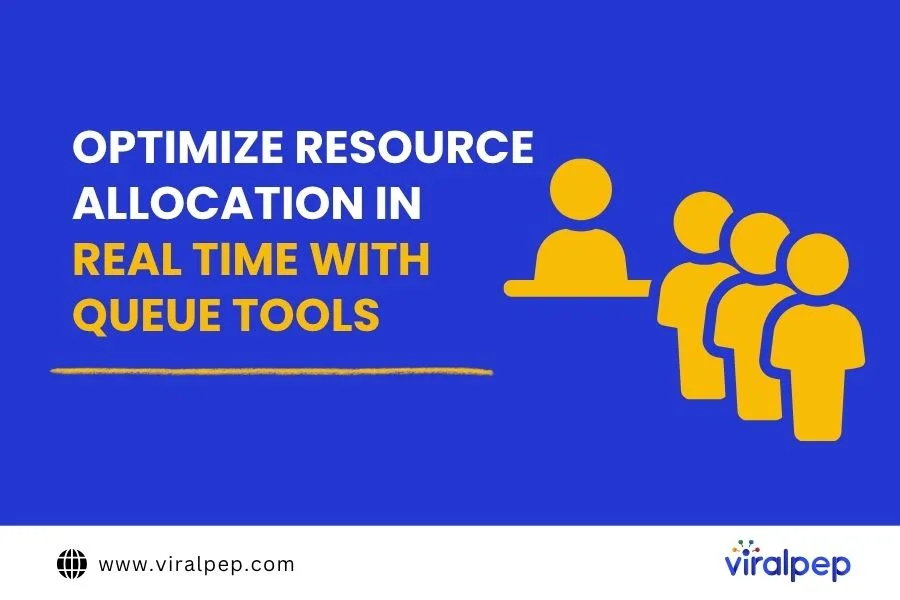Ever felt your pulse rise while waiting in a line that’s not moving, watching the receptionist juggle walk-ins, missed appointments, and a blinking screen that’s not helping? Whether you’re a customer stuck in the queue or a manager trying to untangle the mess, you’ve probably wondered: There has to be a better way to run this.
Turns out, there is. And it’s not just about calling the following number, it’s about reallocating people, time, and resources in real time. That’s exactly what smart queue tools like Q-Flow from Q-nomy are built for. More than just line managers, these systems give service teams the power to adapt instantly when the unexpected hits or demand doesn’t follow the script.
From clinics and banks to universities and city offices, organizations are moving toward queue software that doesn’t just keep order, it creates momentum.
The Need for Real-Time Resource Allocation
Let’s be honest: in service settings, things don’t just change daily; they change minute by minute.
Maybe it’s a staff member calling in sick. Or a sudden spike in walk-ins after lunch. Or that one customer who needs “just a few quick forms” and takes 25 minutes. Static schedules don’t stand a chance against moments like these.
And those moments aren’t rare, they’re everyday occurrences. You don’t need a crisis to see the cracks. Even minor delays, when stacked up, become the difference between a five-star experience and a bad online review.
Companies that embrace real-time data decision tools tend to move faster and perform better because they are not reacting; they are responding with context, speed, and control.
How Queue Tools Enable Real-Time Optimization
So, how exactly do queue tools make the magic happen?
The key is visibility. Tools like Q-Flow pull in live data from appointments, walk-ins, team availability, and service duration and give managers the power to change things.
Here’s what that looks like in action:
- Live dashboards that show who’s waiting, who’s helping, and who’s running behind
- Intelligent routing that automatically connects each person to the right team member
- Real-time alerts when a counter goes offline or demand spikes
- Analytics engines that learn from daily patterns to fine-tune future planning
This kind of real-time agility doesn’t just make life easier for managers; it builds confidence across your team. Staff feel supported, workflows stay balanced, and service becomes more human, not robotic.
Service systems perform best when they respond in real time, whether in a local clinic or across continents. That’s the thinking behind the newly ratified global strategy for agile health systems, which aims to ensure health services everywhere can adapt quickly when demand surges or conditions shift. Queue tools like Q-Flow bring that adaptability to the front lines, where it counts most.
Benefits of Real-Time Resource Allocation
Why does this matter? When things run smoothly, everyone feels it: staff, customers, and your bottom line.
- Shorter wait times, which means fewer walkaways and complaints
- Better use of staff time, so no one’s overwhelmed or standing idle
- Improved customer experience, even during peak hours
- Actionable insights that help train staff and fine-tune strategy
It’s the kind of efficiency that resource optimization tools make possible, turning service from a bottleneck into a competitive advantage. When your team has the tools to act instead of react, everything works better from first impressions to outcomes.
Hospitals using real-time triage tools saw faster throughput and better outcomes. The same logic applies anywhere people wait and expect to be served, because speed alone isn’t enough. It’s about the proper response at the right time.
Choosing the Right Queue Tool for Your Business
Not all queue management software is created equal. Some tools look good in theory but fail when service conditions become unpredictable.
When evaluating your options, ask:
- Can it make real-time decisions, or just schedule?
- Does it integrate with your existing CRM or booking systems?
- Is it flexible enough for multiple departments or locations?
- Will it scale as your service needs grow?
Solutions like Q-Flow offer modular tools that fit different workflows, whether you’re managing a campus-wide registration week or a daily clinic check-in line. It’s not just queuing, it’s coordination.
In Conclusion
Let’s be clear: queue management software isn’t just about managing waitlists anymore. It’s the nervous system of your service environment connecting data, people, and timing.
With tools like Q-Flow, businesses can turn unpredictable service traffic into a well-paced, responsive flow. These resource optimization tools don’t require huge teams or tech overhauls; they just help your existing people and systems work smarter.
You’re not alone if you want to improve customer experience, reduce burnout, or get ahead of lobby chaos. And you don’t have to do it blind.
Already using a queue tool in your business? Thinking about it, but not sure where to start? I’d love to hear what’s working—or what still drives you nuts. Share your thoughts below. Let’s swap ideas—and maybe even a few queue horror stories.











